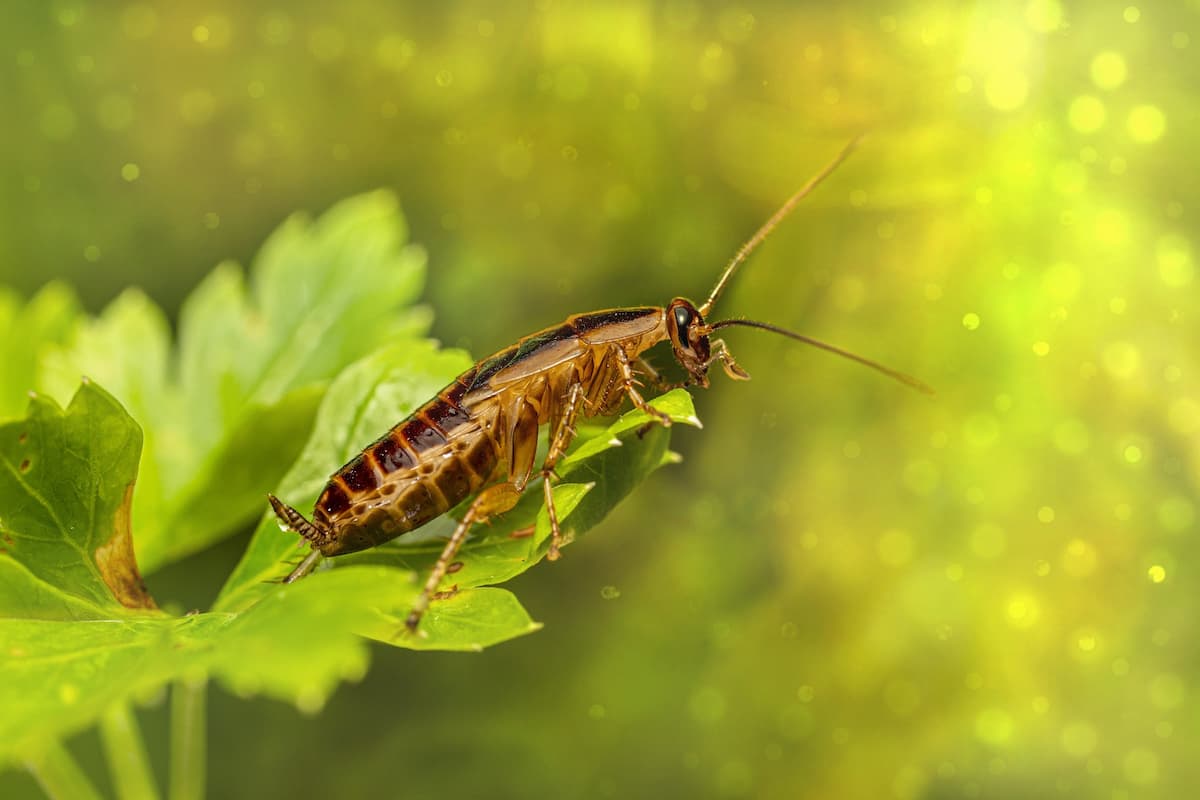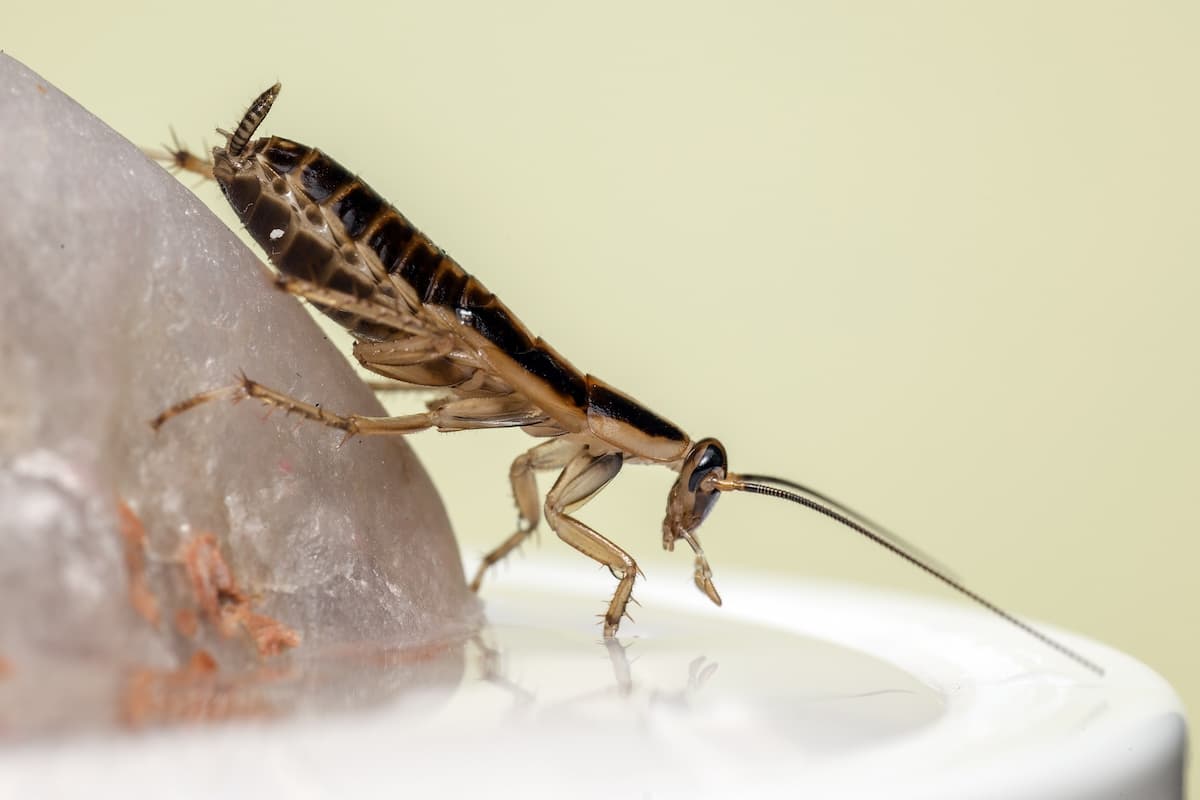What Is The Purpose Of Cockroaches?
The first thing most people do after seeing a roach is kill it – whether by spraying it with insecticide, stomping on it, or crushing it with the nearest object.
Cockroaches gross people out, and many think their only purpose is to invade your home, spread germs, and steal your food.
Is there anything else these little beasts are good for? Surprisingly, yes.
Cockroaches serve a real purpose in the environment. They’re valuable decomposers, an essential part of the food chain, and contribute to pollination and the nitrogen cycle. They also benefit humans as protein sources and are crucial in specific research, even providing medical relief.
The Role of the Cockroach in an Ecosystem

Cockroaches shine in nature, and it’s easy to see why, as more than 95% of cockroach species live in natural habitats.
The few that live with humans don’t contribute as much to the below processes, but it’s no problem as their wild counterparts carry most of the weight.
Decomposition
Roaches, like many other insects, are nature’s decomposers.
They eat almost anything, from starches and fecal matter to glue and their dead counterparts.
Because they’re not picky eaters, they reduce a lot of environmental waste.
Decaying organisms are generally good for the environment, but when uncontrolled, the reacted chemicals will overflow into the ecosystem, creating an imbalance.
Cockroaches and other decomposers provide this balance, and this role shouldn’t be overlooked.
Of course, it sucks that part of their menu is the crumbs in your kitchen, but as long as you keep your house clean, they’re happy to find nutrients elsewhere.
Nitrogen Cycle
Decaying matter carries proteins that decomposers break down into nitrogenous waste.
Plants take this nitrogen from the soil and grow to produce new leaves, fruits, and stems.
Living organisms benefit from plant growth as all food is tied to it. The consumption of plant protein then results in the acquisition of animal protein.
Animals can’t store excess proteins in their bodies, leading to their excretion as nitrogenous waste.
This nitrogen goes back into the soil, and the cycle continues.
Without cockroaches and other decomposers, plants would decrease.
The nitrogen cycle would miss a critical element as the nitrogen in decaying organisms would remain locked up and unreleased to the soil.
It, in turn, would mean a reduction in the food supply and a catastrophe we’re better off not experiencing.
Roaches are far from extinction, meaning they can play their role in the nitrogen cycle for a long while.
This longevity owes to their supernatural survival mechanisms and their high reproduction rates.
While all of humanity isn’t doomed without cockroaches, nature is certainly better off with them around.
Life Sustainers
Cockroaches, like all living organisms, are part of the food chain.
Unfortunately for them, they’re nowhere near the top.
Their low position on the chain means some animals rely on them for food.
Their natural predators include frogs, mice, and bigger insects like beetles and spiders.
Though these predators have other food sources, removing cockroaches from the equation would increase the need for a more restricted diet.
The reduced food supply would eventually lead to their decline, spreading the effects throughout the food chain.
The very existence of the cockroach means specific species can count on many years of survival.
Pollination
Rare cockroach species, like those native to French Guiana, help plants reproduce.
In search of food, they sometimes stand on top of tall flowers, attracting pollen grains to their bodies.
As they relocate, they transfer these pollen grains to other flowers, facilitating reproduction.
Because only select cockroach species have this prestigious role, you’re unlikely to see it in action.
If you live somewhere that relies on pollination this way, you may come to see the roach as more than a pest.
The Role of the Cockroach in Our Lives
Roches don’t only have a role in nature – they also serve a purpose for human beings.
Food Sources (for People)
Cockroaches are excellent protein sources.
Though uncommon in the West, they’re a welcome delicacy in countries like China and Thailand.
The locals have different ways of preparing the insect, but most ensure to cook it.
Those who eat it raw are unlikely to consume the same species you’d find in your home.
Home invaders are exposed to poisons and dangerous chemicals, so those who eat roaches breed wild species instead.
Though they lack hazardous chemicals, they still carry bacteria and viruses like their domestic counterparts.
Cooking kills these bacteria, resulting in a safe eating experience.
Food Sources (for Pets)
Cockroaches are a great source of food for reptiles and insects.
Spiders, geckos, and monitor lizards all have roaches on their menus.
Most species get the job done, but the Blaptica Dubia (Dubia Roach) is the best.
The insect is less agile than its counterparts, making it easier to contain.
It’s also less smelly than other species, easing the breeding process.
Nutrient-wise, roaches are high in protein and low in chitin, which is present in the exoskeleton.
They’re fleshier than feeders like crickets and contain less fat than worms.
By using cockroaches as a food source, your pet gets its fair share of nutrients, and you have an easier time feeding them.
Medical Relief
The cockroach has been used to treat as many as 30 different ailments in human beings, including boils, wounds, and indigestion.
A cockroach’s brain also contains compounds that could be useful in killing E. coli and MRSA bacteria.
Specific Chinese clinics use the extract of a dried cockroach as part of a solution used to cure ulcers, burns, and other conditions.
Known as the Kangfuxin solution, it’s still rare in Western countries.
However, as more and more research is conducted on cockroaches as a medicine, it might gain popularity in the coming years.
Research
Cockroaches are great research subjects for scientists specializing in prosthetics (a branch of medicine that deals with artificial body parts).
They’re an excellent reference point because they can regrow their limbs.
However, they aren’t the only animals with this incredible gift.
Salamanders can also regrow their limbs.
Unlike cockroaches, however, they don’t reproduce as fast and hence aren’t as abundant.
Depending on the species, spiders can also regrow their limbs and lay between 2 and 1000 eggs. However, specific spiders are toxic or harmful to humans.
The lack of aggressiveness in a cockroach makes them easier to work with.
The Unattractive Side of the Cockroach

Since roaches are so valuable to humans and the environment, should you have a soft spot for the one camping in your kitchen?
Not quite.
Roaches are still sources of harmful pathogens like bacteria and viruses.
Their droppings, saliva, and shed exoskeleton can trigger asthma and allergies.
They also contaminate your food when getting into contact with it.
Though they play numerous roles, specific species are annoying pests you shouldn’t tolerate in your house.
Seeing them indoors should spark an immediate effort to eradicate them.
Conclusion
Cockroaches are rarely anyone’s favorite animal.
Even then, they have roles to play in sustaining our planet.
A group feeding on a dead mouse contributes to the nitrogen cycle, while the fate of a mango somewhere depends on whether a roach will fulfill its pollinating duty.
It’s not as clear to the average homeowner dealing with an infestation in their kitchen, but the truth remains that every living thing eventually serves a purpose.
